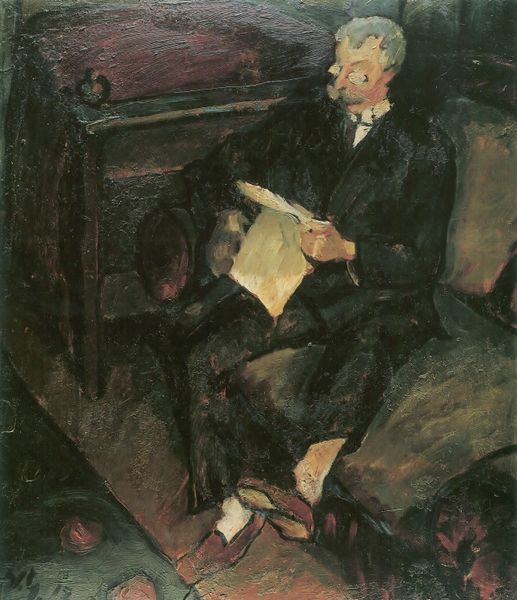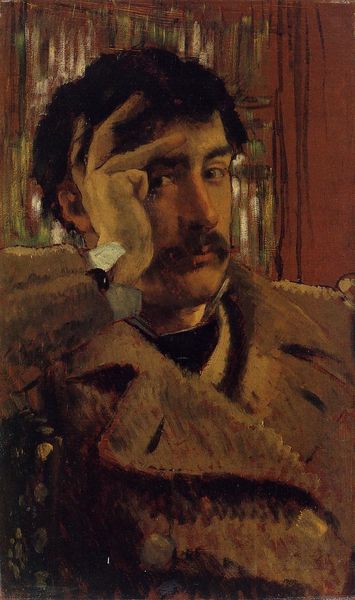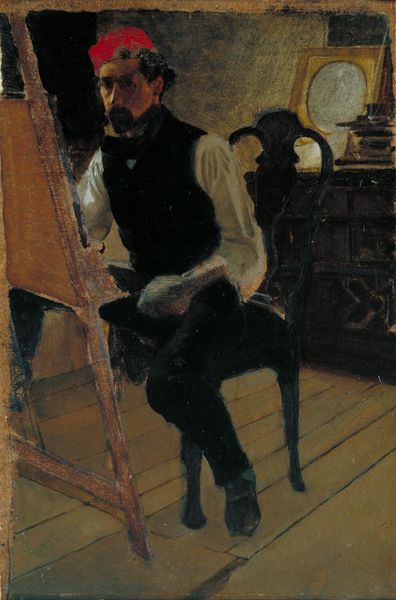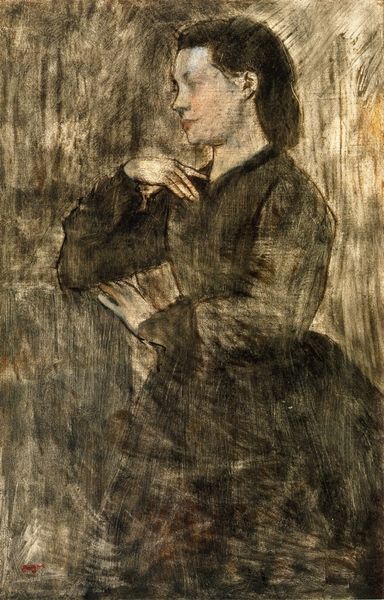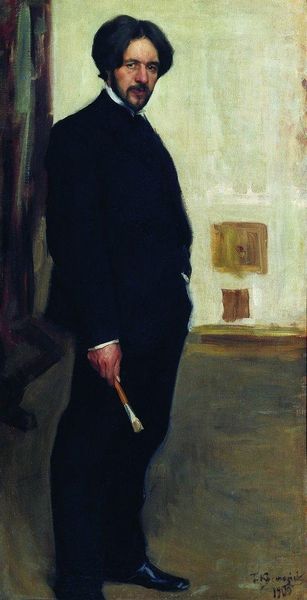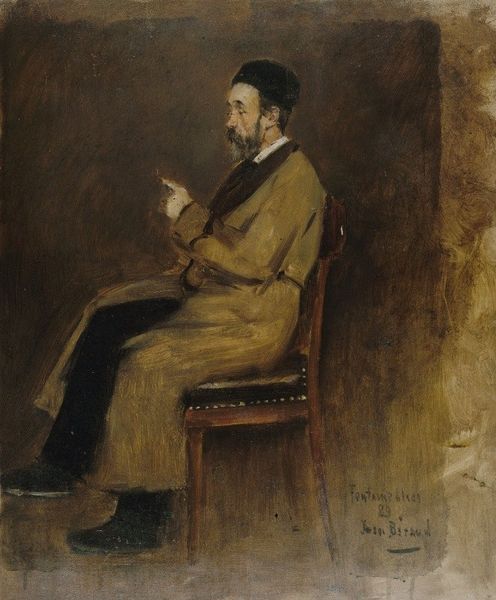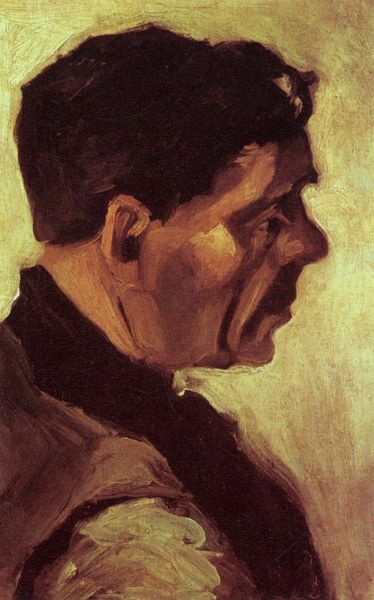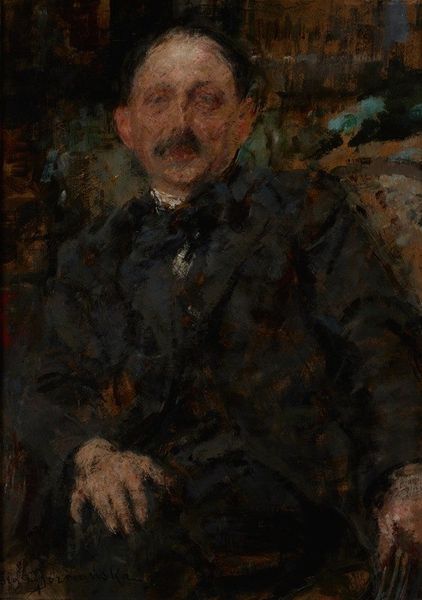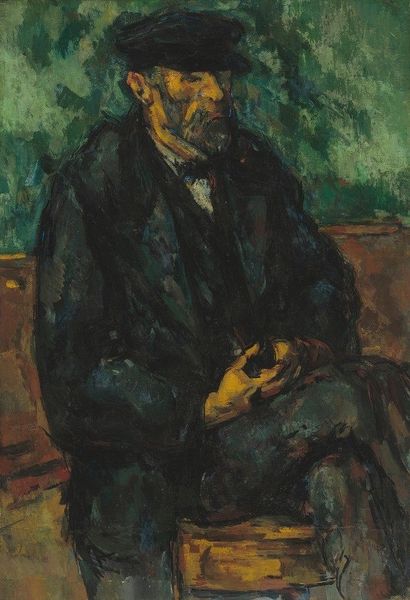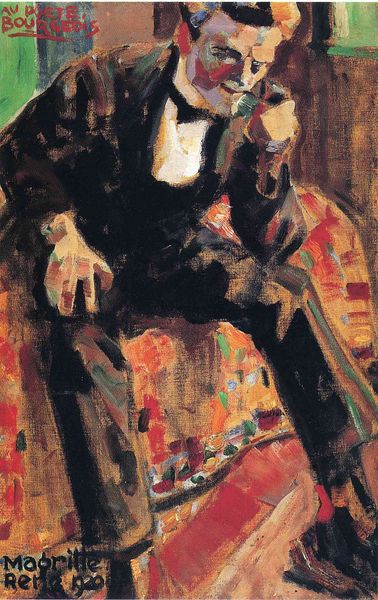
painting, oil-paint
#
portrait
#
painting
#
impressionism
#
oil-paint
#
oil painting
#
male-portraits
#
underpainting
#
genre-painting
#
academic-art
#
portrait art
#
fine art portrait
#
realism
Dimensions: 137.2 x 193 cm
Copyright: Public domain
Curator: Good afternoon. We are looking at Thomas Eakins' "Portrait of Professor William D. Marks," completed in 1886. It's an oil painting, and it resides in a private collection. Editor: My first impression is subdued intensity. The somber color palette seems to hold a hidden energy, like he's about to either leap from his seat or launch into a brilliant lecture. The loose brushstrokes add to this feeling. Curator: The loose brushwork is characteristic of Eakins’ later style, moving away somewhat from the rigid academic style towards a more impressionistic feel. Marks was a professor of mechanical engineering, and Eakins, known for his commitment to realism, sought to capture not just a likeness, but the intellectual rigor of his sitter. Editor: I love that. It feels so different than, say, a John Singer Sargent portrait, where you often get a sense of performance. This feels...rawer, more genuine, even with the professor’s formal attire. Like a backstage pass to his intellect. Do you think that realism clashed with the established notions of portraiture at the time? Curator: Absolutely. Eakins often courted controversy with his unflinching portrayal of his subjects. There’s a psychological depth here that was quite modern for its time. Notice how his gaze isn't directed at us; he’s seemingly lost in thought, engaging with his own ideas. And that was perceived as challenging the norms of presenting a respectable public image. Editor: And I love that his hands are clasped on the desk. Like the weight of all his thoughts and responsibilities are grounded there. There is also a tension there – maybe not sadness, but thoughtfulness and maybe, just a little, a world weariness? Curator: Yes, perhaps a quiet contemplation of his field and its impact. The setting also serves a function; the deliberately unfinished background throws Marks into sharp relief, forcing us to truly confront the individual. It’s interesting how Eakins used the underpainting as part of the final work here. Editor: Exactly. A truly stunning image! I like the thought of Marks still somewhere out there, caught forever in that contemplative moment, an eternal echo of academia. Curator: A fascinating piece, revealing the power of portraiture to go beyond surface representation and enter the realm of genuine psychological insight. Thank you for your time.
Comments
No comments
Be the first to comment and join the conversation on the ultimate creative platform.

